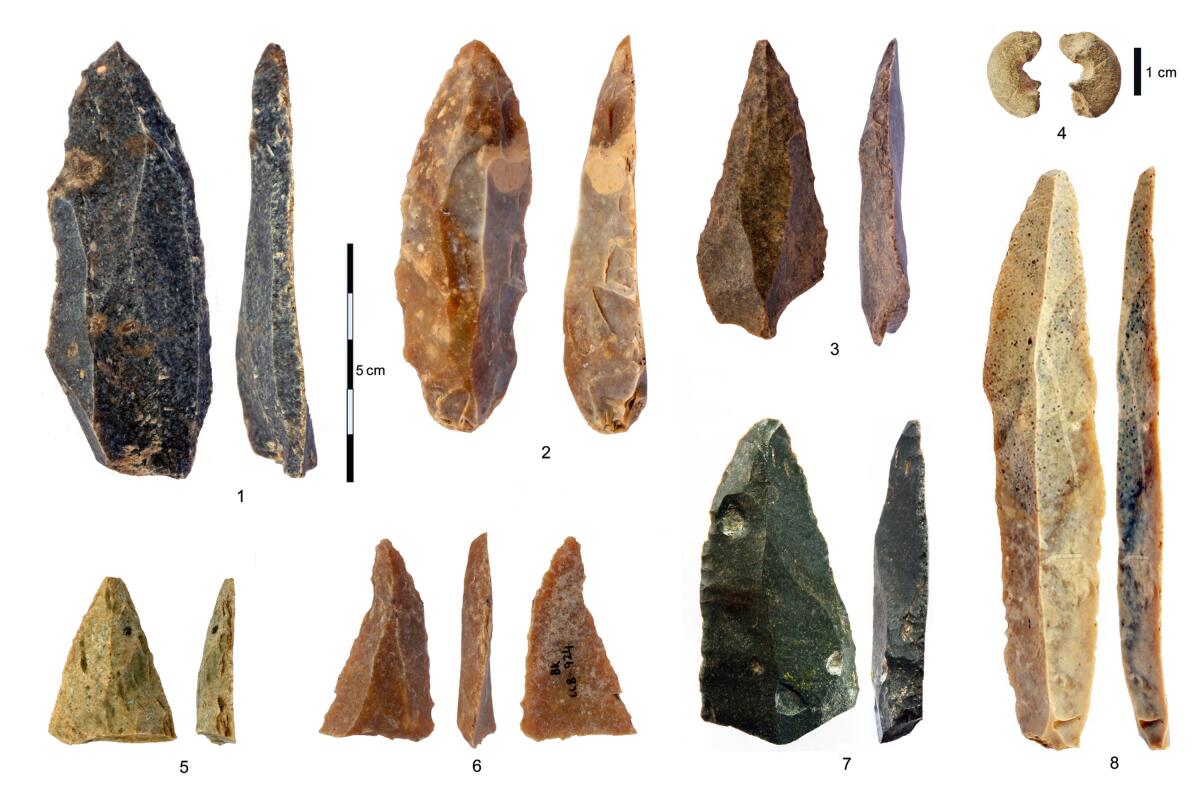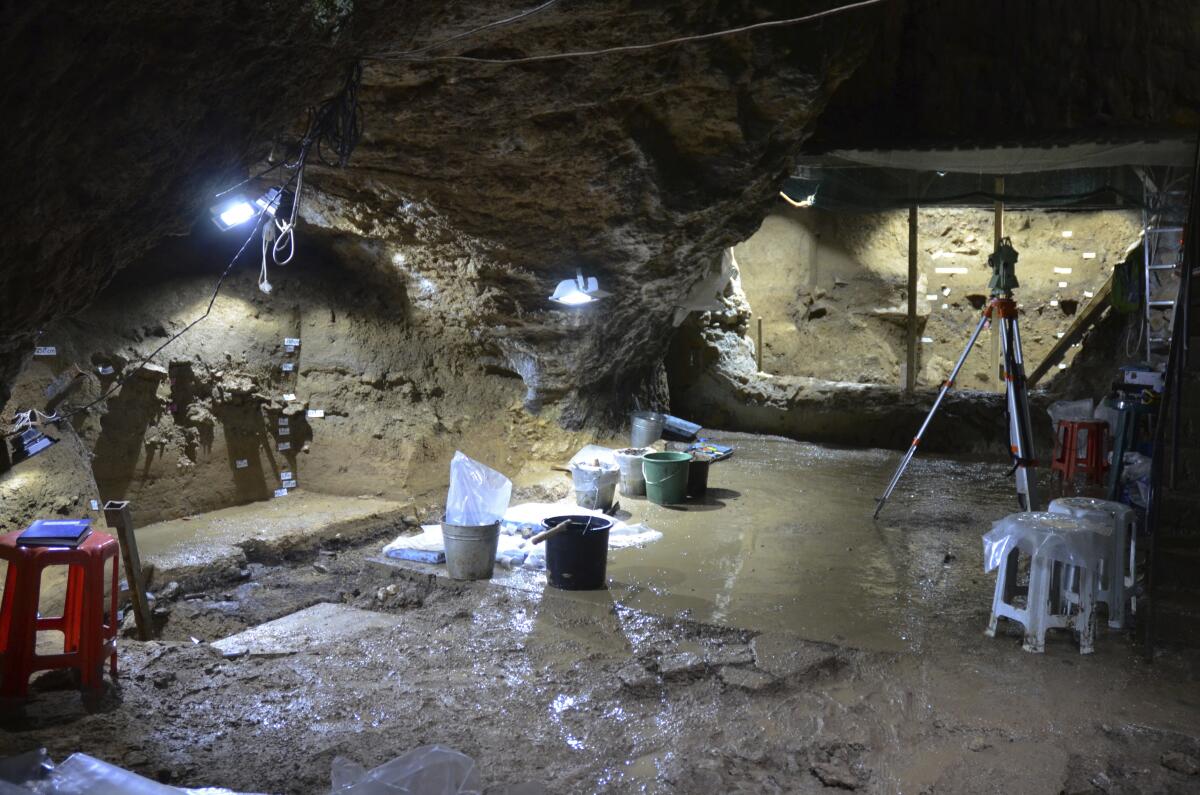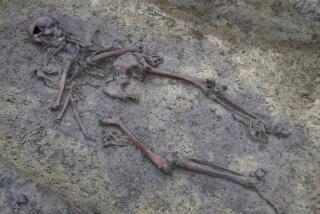Humans may have reached Europe earlier than thought

- Share via
Human bones from a Bulgarian cave suggest our species arrived in Europe thousands of years earlier than previously thought, sharing the continent much longer with Neanderthals.
Scientists found four bone fragments and a tooth that detailed radiocarbon and DNA tests show are from four Homo sapiens, the oldest of which is dated to about 46,000 years ago, according to two studies published Monday in the journals Nature and Nature Ecology & Evolution.
Until now, the oldest European human bone fragments were ones found in Romania. Efforts to date them ran into problems but they were likely from sometime around 40,000 years ago, give or take a few thousand years, said archaeologist Helen Fewlass of the Max Planck Institute for Evolutionary Anthropology in Germany, lead author of the radiocarbon dating study. And that bone had Neanderthal genes in it, indicating that interbreeding had occurred about 200 or so years earlier, she said.
Researchers said they think our species came from Africa about 47,000 years ago during a brief warming period.
It means that for about 7,000 years or so, humans and Neanderthals lived on the same continent, interacting a bit, but probably not often, said Max Planck paleoanthropologist Jean-Jacques Hublin, leader of the other study.
Neanderthals went extinct about 40,000 years ago.
Modern humans are a little more Neanderthal than we thought.
“We know that when they [humans] arrived, there were Neanderthals,” Hublin said. “The Danube Valley might have been a way for modern humans — by the way, at different periods — to move into this part of Europe.”
This early batch of our species probably never made it west over the Alps, was likely only a few hundred people and may have died off, Hublin said. Modern Europeans descended from a second later wave of humans out of Africa, he said.

The fossils were found in Bulgaria’s Bacho Kiro cave, which has been open to scientists and the public since 1930. The cave is on a very steep cliff and contains animal bones, including those of a rhinoceros and lions, Fewlass said.
“How would they get into that cave on the side of that cliff unless humans brought parts of the animal, the body, into the cave?” she said.
There’s also a large amount of bones from cave bears. These early Europeans made pendants out of cave bear bones, not other animals, showing an affinity for that animal, Hublin said.
Hublin theorized that the discovery indicates that Neanderthals, who until this time period hadn’t shown jewelry-making skills, learned how to make pendants from our species.
Even Neanderthals liked a little bling.
The study makes “a very convincing argument and greatly strengthens the hypothesis that modern humans dispersed into Europe before 45,000 years ago from Western Asia,” said Katerina Harvati, a paleoanthropologist at the University of Tuebingen who wasn’t involved in the study.
Harvati agreed with Hublin that that makes it likely that Neanderthal jewelry found in Western Europe was something that species somehow learned from humans.
Other experts, who lauded the dating of the bones, said that was a theoretical leap that they weren’t quite convinced of.






